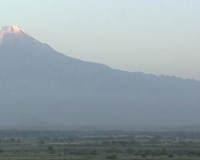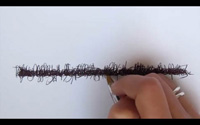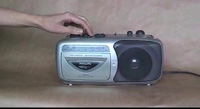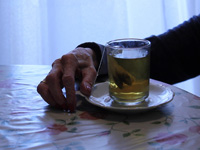  
|
NOW&AFTER“NOW&AFTER’14” FESTIVAL’S TOPIC IS “MEMORY MIGRATION” International Video Art Festival "Now&After’14" will take place from 2 to 30 of April 2014 at the State Museum of GULAG http://www.gmig.ru. Memory is a special human ability to accumulate the past and to keep it for the present and future, overcoming the oblivion. We suggest the artists to explore memory as a flexible structure that is migrating in time and space from person to person, from generation to generation, between social groups and nations, between cities and continents, between virtual and real world. Which memory features are important for us? · Memory as a process, memory in evolution, memory in search. · Lost memory, returned memory. · Lapses of the memory and continuous chain of memories. · Memory as a mechanism of past actualization. · Autobiographic memory and collective memory. · Memories about things that never happened and those that are only going to happen. · Memory as a premonition of unpredictable future and as a precursor of eternal present. · Memory as a stop in time and a leap in time. · Memory in the virtual space. · The site of memory and memory of the place. · Memory of the loss and the loss of memory. In 2014 "Now&After" festival is being held at the State Museum of GULAG – a place that has accumulated the memories of Stalin's punitive system. In the area of our special interest there is a traumatic memory: reliving and rethinking of the historical traumas, especially those related to the history of GULAG. Winners1 PRIZE Clemens Wilhelm, Germany, Peter Is Dead, 2012 (RUR 50.000)
2 PRIZE Chang-Jin Lee, USA, Comfort Women Wanted, 2013 (RUR 30.000)
3 PRIZE Badr El Hammami, France, Memory #2, 2012 (RUR 20.000)
BEST RUSSIAN VIDEO Marina Ñhernikova, Russia, About About This, 2013 (RUR 10.000)
NOW&AFTER SPECIAL PRIZE Michael Alekseenko, Ukraine, Dust, 2014 (RUR 10.000)
HONORABLE JURY MENTION
Leila Alaoui, Morocco, Crossings, 2011
Elena Artemenko, Russia, Comfortable Protest, 2012-2013
Milou van der Maaden, UK, From A Head To A Head, 2013
Daniel Pesta, Czech Republic , I Was Born in Your Bed, 2012-2013
Participants
COMPETITION PROGRAM
Leila Alaoui, Morocco, Crossings, 2012, 6:00 CROSSINGS is an immersive multi-screen video art project exploring the experience of sub-Saharan migrants who embark on the perilous journey to reach the much sought-after European shores. The film aims to re-create the disturbing and heartbreaking sensations of their crossings using chocking, often-tragic real life stories. It is an immersive experience into the reality of a growing minority, deprived from basic human rights and struggling to survive.
Alexandra Artamonova, Eugenia Lapteva (“Gentle Women”), Russia, Mud, 2011, 7:00 Girls from the poor villages at the Curonian Spit at Baltic sea coast that historically was a part of East Prussia used to wear a white dress for only few occasions in their life – baptismal ceremony, communion and the farewell to the ground ceremony carried out before getting married. The farewell used to be an obligatory rite every bride had to go through before leaving her parental home. Wearing a wedding dress and their best jewelry young brides used to go to the gulley and throw themselves into the mudflow that was running slowly from the hillside into the sea. They were trying to immerse themselves as much as possible into the ground, nestle up to it and get into it. This action symbolizes how hard it is to say goodbye to your youth and the home ground.
Elena Artemenko, Russia, Comfortable Protest, 2012-2013, 3:25 The project is represented by the object called “oppositionist’s kit”. It is a device that can be transformed into reusable plastic banner or into a folding-chair. The kit is easy to use and includes all the items that might be necessary during the protest action (balaclava, umbrella, first-aid kit, etc.).
Alec Von Bargen, Mexico, Feminae, 2013, 3:43 The video is made up of a sequence of hundreds of stills. The video portrays the same woman at different zooms. The video contains audio which relates to a mood, an emotion, a dialogue. The video becomes the inner dialogue of a woman, the complexity of a human being who laughs, cries, screams and remains in silence, all the time in profound discussion with her own demons.
Risto-Pekka Blom, Finland, Kudryavka - Little Ball of Fur, 2013, 5:05 In an expanding universe, in the cosmic noise of celebratory speeches, with an eye always blackened by a punch. Kudryavka - Little ball of fur is a piece compiled mainly of archive material, centering around the launch of Laika the dog into space in 1957. Laika's original name was Kudryavka.
Dmitry Bulnygin, Russia, Soyuz-11, 2011, 4:30 A crash of the spaceship made of sugar cubes, not just melting down in water, but decomposing as if it was a living creature. Like an empire, that has given to it its name, whose agony we can see to the present day.
Marina Ñhernikova, Russia, About About This, 2013, 4:00 Nonlinear memory processes allow us to stay now and then, here and there, to exist in several places at the same time. Old and new technologies make it possible to transfer these phenomena into the “real” space of video and cinema. Vladimir Mayakovsky – a poet with cinematographic way of thinking, his artistic practice aimed at the new aesthetics setting, as well as 1920’s artistic avant-garde ideas have become the sources of inspiration for this video. Digital editing combines contemporary images of the streets of Moscow, Berlin and Paris with fragments of 1920’s avant-garde films, creating a dynamic space of Mayakovsky’s journey so tragically interrupted in the static space of his room.
Badr El Hammami, France, Memory #2, 2012,6:00 The video "Memory # 2" shows about thirty children in the recreation yard with mirrors in their hands. I set up my camera on a tripod and asked the children to arrange themselves in the courtyard, and then shifting their hands in all directions, with slow movements, direct the reflection of the light towards the camera. In the final montage, I slowed the video to the maximum the limit between photographs and video. The reflection of the light in the camera leaves an appearance of white areas, which appear / disappear. This video was realized during an interventions with the students at the primary school of "Moulay Rachid" in Al Hoceima (Morocco), where I myself went to school during years the 1980s.
Diego Alejandro Garzón, Colombia, Whisper of Move, 2013, 7:28 This video demonstrates a walk from the Plaza de Bolivar in Pereira (Colombia) to Bolivar Square of Cartago. Dropping down small cotton balls resembles to a Tom Thumb tale, who in order to remember the way back home from the woods had used the small white stones to mark a trail. Here, instead of stones, cotton is used, symbolizing some insignificant memories to be carried away by the wind. He draws a parallel between the fragility of memory and the fragility of the cotton used to mark the trail. It's like remembering the history of Pereira, but not wanting it to repeat again. Like many people from this area, who have gone to other countries, unwilling to remember the way back. This video metaphorically represents the story of the city of Cartago, that in the year 1691 for economic and political reasons had moved from the land where today Pereira is situated, to the bank of the river La vieja, approximately 35 kilometers southwest, where it stands until today.
Amaya Hernández, Spain, Memory of a Space. Oña Street 115, 2012, 3:08 Many times I think about a site in San Bernardo Street. Years ago there was a hospital. One of the rooms had a very special meaning to me. The construction was demolished and there is a big uninhabited hole now. However, when I pass by, I cannot find anything more restless than observing this small floating space in the void… We appropriate space. With architecture, we define, structure and transform the void, turning it into living spaces. We adapt to it and we make it ours. The light that enters in our living rooms is altered and modified, it moves slowly forward reminding us the passing of time… but it is when everything vanishes that it becomes vertiginous… we need artifice, simulation and simulacrum.
Chaja Hertog, Nir Nadler, The Netherlands, Harvest, 2013, 10:04 An abnormal phenomenon occurs in an olive grove as one of the trees suddenly shakes its branches rapidly, thereby evoking an uprising. As the natural protest rises, a police squad rallies through the landscape and seeks to suppress the rebellion. This film is inspired by the ancient labour of olive harvest, which encompasses both cultivation and aggression at the same time.
Seyit Battal Kurt, The Netherlands , Pony, 2012, 2:47 In the video Pony we see the friendly animal trying to invite us into his surroundings, that of a dilapidated house.
Stuart Layton, UK, The Devil's Haircut, 2013, 6:38 An Iraqi barber working in the UK tells his customers of his time as a child ballet dancer at the Baghdad Ballet School. One day the barber 'Dave' went back to Iraq to visit friends, no one has seen him since. His shop remains closed.
Johanna Lecklin, Finland, A Christmas Tale, 2013, 4:17 A small girl decides to reveal to the other children that Santa Claus does not exist. She rips off Santa's beard.
Chang-Jin Lee, Comfort Women Wanted, USA, 2013, 9:37 The film brings to light the memory of 200,000 young women, known as "comfort women" who were exploited as sex slaves in Asia during World War II. The Japanese Military Comfort Women System was organized on an industrial scale. The title references wartime newspaper ads. This video is based on my interviews with Korean, Chinese, Taiwanese, Indonesian, Filipino, and Dutch “comfort women” survivors, and a Japanese soldier.
Yujin Lee, Emi Hariyama, USA, 108 Bows, 2013, 9:01 The ‘bowing down’ (‘Jeul’, in Korean) in Buddhism is a meditative device, requiring to lower oneself to the lowest physically possible position. Even if one bows down in a temple to an icon, the icon only symbolizes the realization of the highest human potential (the sublime human qualities). Ballet is a form of art that strives for the perfect form. It is one of the most technically strenuous dance genre that must seem completely effortless. Combining these two forms of training (training of the mind and training of the body), the video guides the audience to meditate on the idea of the limits and the possibilities of the human self, and the sublime beauty of the process of such activities.
Anastasia Levina, Russia, Universal Memory Cells, 2014, 7:19 I wouldn’t like to give any comments about my work. The key to it is in its name.
Milou van der Maaden, UK, From A Head To A Head, 2013, 4:25 “From A Head To A Head” is a reediting of the Dutch governmental film about the return of the head of king Badu Bonsu the 2nd who was executed by the Dutch in 1838. The head of the Ghanaian King was given back to his relatives in July 2009. The video deals with suppressed memories of colonial violence, which by exposing this contemporary appropriation of colonial history questions the ownership of that history in the way it is presented to us. It creates new memories, which constitutes our understanding of that history. These new memories exist of a colonization of knowledge and bare in them another layer of abuse.
Gemma Marmalade, UK, Strange Birds, 2011, 7:20 In 1957, when conducting extra sensory perception trials with animals, a team of leading parapsychologists discovered that pigeons were able to determine the sexuality of humans through visual observation. Given the potential ramifications of this discovery at a time where non-heterosexuality was either illegal or condemned, the research wasn’t published or reported. Strange Birds is an experimental polyvisual installation artwork that responds to this groundbreaking discovery from an enlightened contemporary perspective. The title, Strange Birds is taken from Polari (a form of Cant slang often used in queer subculture, particularly active during times when homosexuality was criminalised) where the phrase ‘a strange bird’ suggested someone of peculiarity and/or indeterminable sexual preference. It also illustrates through this human and avian encounter the innate characteristics of sexuality and ultimately, our human vulnerability in light of natural and evolutionary phenomena.
Mila Panic, Bosnia and Herzegovina , Our Neighbor Died, 2013, 3:04 During the dinner, family talks about smarmy event, the death of a neighbor.
Daniel Pesta, Czech Republic , I Was Born in Your Bed, 2012-2013, 9:98 The entire concept is constructed on the simple principle of a school photograph. Two classes of small children, one of girls, one of boys, stand in typical neatly arranged rows, as we all know from our own school days snapshots. In their hands the children hold white/black transparent cloth satchels similar to those in which one carries indoor shoes for changing into. An adult strong voice can be heard, calling the name of one of the individual pupils. One by one the children pull the satchels they have ready in their hands over their heads. It is striking how the Roma children voluntarily subject themselves to these orders. This is how one child after another reacts, until they all have their heads covered. The transformation of an individual and a horde has been accomplished.
Javier Plano, Argentina, 5 Actions (On the Collective Memory), 2010, 7:54 “(…) read in books, taught and learned in schools, past events are chosen, collated and classified following needs and rules (…)”, says Maurice Halbwachs, on the pages of his book La Mémoire collective. Historical events are generated by individuals or groups of these, but even contemporary events are transmitted and accepted as true through the written word with even more strength and solidness than with any other medium or method. On the video, the fulfilled actions acquire new meanings, when these exceed the material world and extend on what that shredded paper represent and symbolize. The lack of subtlety on this acts and its registry, turn them violent, ordinary, and definitive.
Alona Rodeh, Germany, Barking Dogs Don't Bite, 2012, 6:57 Barking Dogs don’t Bite is composed of two parts – Day and Night. Both sections show a vacant storefront of Braverman Gallery in Tel Aviv. It is shot from both inside and outside, during a cyclical process which seems to be automatic and self-inflicted: a smoke bomb is thrown into the center of the space from above - and one by one, all defense mechanisms (alarm, sprinklers, bars) begin to act, in an orchestrated performance. There are no intruders or trespassers, only passers-by who do not notice the action. Instead, the viewer remains the sole witness to this drama in its entirety.
Jung Hee Seo, South Korea, Sing Under, 2012, 10:00 This project was conceived under the influence of contemporary images of recurrent disasters. The impressive quantity of these kind of images has a paradoxal double effect: to trivialize the nature of such enormous tragedies, but also to increase the anxiety concerning a another accident which hasn’t arrived yet. By the means of an intimate approach which concentrates on the presence of a human body in its pure savage state, this project seeks the creation of a unique perceptive and conceptual vision of such a tragedy.
Vygandas Simbelis, Sweden, Father's Footsteps, 2013, 5:12 The artist took his father Leonas Simbelis on a journey to his father's family deportation place, Irkutsk district in Siberia, Russia. They traveled through Moscow, Irkutsk, the lake of Baikal and Bodaybo area in June, 2012. By following on his father's childhood route, 60 years later, visiting Leonas' involuntary "home", and other places populated by deported Lithuanians, travelers have experienced deportees' life style and conditions. Instead of villages and houses, they explored the Russian gold mining industry and the ruined landscapes. Artistic research on migration paradigm and resistance has been developed in accordance with national identity.
Joana Stillwell, USA, Goldfish, 2012, 3:24 This video is based on a goldfish I had as a child and about an attempt to bring it back. It is about the difference between believing and pretending as a child and the little disappointments we go through to learn about how the world works.
Saša Tkačenko, Serbia, Perfect Ride, 2012, 5:04 In the interior of the Museum of Contemporary Art in Belgrade, which purpose was neglected for years (closed down for renovation for 6 years now), a skater is trying to perform what is most important for him – the perfect ride. The atmosphere of timelessness that is dominant in the space of the “abandoned” Museum appeared perfect as the scenery for an incompatible action that gave its endless reconstruction new character. In this way, I wanted to show the intimate and intense moments of connection between a young man and his skills to the forgotten building. This video is essentially a kind of homage to the building – the masterpiece of modernistic architecture in socialist Yugoslavia.
Clemens Wilhelm, Germany, Peter Is Dead, 2012, 14:4 Peter is dead. Why do humans make puzzles? Does photography conserve memory? What is a good story? Why is one interested in the life of a stranger? How do you read a stranger? This video consists of photographs which I found in the garbage bin of my house. The essence of a stranger's life was thrown away. I felt a strong urge to look at these pictures and to give them an order. A fictive biography based on analogue photographs tells the life of Peter the truck driver and barkeeper from West-Berlin, who could also have been called Klaus or Jürgen. Why were these pictures thrown away? Does Peter not deserve to be remembered? Or do we just want a good story?
Michael Zheleznikov, Russia, On Pause, 2012, 6:00 This is a documentary that came about by chance. The artist was waiting for his flight at the airport when he met "this guy." ─ I was coming home from New York, where I did a project. I spent a month in New York, and I didn't really want to come home so soon, I'd rather have stayed for another few weeks. But I didn’t stay, I went home because they bought me a ticket and I didn't want to cause any trouble. So, I got on a plane and left. And then I met this guy in Moscow airport, who had been sitting there for a week, unable to board a plane. He kept buying tickets one after another, but he just couldn't bring himself to actually get on a plane. So, he was just sitting there in a smelly t-shirt, drinking expensive airport wine, staring at the airplanes. There was something poetic about it.
NON-COMPETITION PROGRAM
Monika K. Adler, UK, Involuntary Memory, 2013, 3:27 The Grandson of a Gulag prisoner suffers from historical trauma resulting from a cataclysmic history of genocide across generations. The collective emotional and psychological injuries cause unsettled emotional trauma and depression. He tries to purify and heal memories.
Michael Alekseenko, Ukraine, Dust, 2014, 7:00 Regime that destroys personality. Systematic monotonous routine work. The sound, reminding that of a sawmill. Self-forcing until complete vanishing. Turning human to dust. Every action made leaves a trace. When disappeared, the material object creates something bigger – the memory about it. The main aim of this work is to show that you cannot eliminate a person without a trace. Dust becomes ashes, a data medium, a memory.
Miguel Aparicio, Spain, The Guardians, 2013, 7:00 "There were thirty-two families. Thirty-two open doors." This film is about the way of life of a place, and how that is reflected in the landscape, at houses, in the names of people and how to name them.
Arnaud Brihay, France, Granica Grenze,2013, 8:30 Video of a trace to relive. She was there, she vanished, she came back. Then pushed away to escape. Resurrecting her just for the time of a passage. Exactly at the German-Polish border abandoned.
Olga Butenop, Russia, Memory Machine, 2013, 23:33 I asked people via internet to tell about the first thing they remember from their life. I wanted to collect stories of people that I have never seen or heard of. Thus, I got a selection of pure visual images from other people’s lives. Then I added a sound-track to these memories, using the computer-generated voice. Then I took a video-record of a constantly rotating turbine and used it to create an image of android memory aggregation of 50 strangers.
Marina Fomenko, Russia, Not Water, 2014, 5:00 Travelling by water from Moscow River to Volga River will inevitably bring you to the Moscow Canal locks. Gates are closing, huge walls arise around you, and you become a canal’s prisoner. This confinement in a trap of floodgates reminds us of Gulag prisoners who built this canal. Thousands of them died during construction. We do not know the exact number because the archives were destroyed at the beginning of the World War II.
Pieter Geenen, Belgium, Relocation, 2011, 23:20 Emerging at dawn, the Ararat twin mountains seem to be in dialogue with each other. The text appearing on screen as dialoguing subtitles is based on testimonies from both sides of the Turkish-Armenian conflict, with historical, political, biblical and utopical references.
Maria Leon, Germany, Things I Never Told You, 2013, 3:27 “Things I never told you” consists in writing a series of thoughts all over the same line. The result is a illegible text that it is not a text anymore, but a drawing composes of superimposed words: the scribble of things that have never been said.
Natalia Monakhova, Russia, The Rites, 2013, 9:57 This video is about an interaction with objects that are not longer up-to-date. They quietly became the things of the past and now they’re being kept in the archives of our memory. They no longer have any practical sense. But nevertheless these objects have a psychophysical sense – they make references to our previous experience. Interacting with them I relive that experience. And moreover, I am trying to fill these objects with new value by consciously performing the rites that I would never have paid attention to earlier, when I still could use those objects for their intended purpose.
Dvora Morag, Israel, And Thus Shalt Tell Your Daughter, 2013, 4:10 In my short video my mother (94), while sitting in her apartment in the nursing home tells a part of her life story to me and my daughter. She survived Auschwitz and her own history and the history of the nation are encompassed in a few sentences.
Alexandra Pirogova, Russia, Biblimlen, 2013, 9:57 Familiar spaces are being interpreted unambiguously and superficially. We often just don’t see the details, don’t let the possibility of diverse existence in…
JuryTOTART (Natalia Abalakova and Anatoly Zhigalov), Russia Artists, since the end of 1970s have been realizing a “Study of the essence of the art in respect of life and art” project, that includes performances, installations and video installations. Irina Galkova, Russia Historian, fine art expert, curator, deputy director of scientific work at the State museum of the history of GULAG Konstantin Grouss, Russia Choreographer, artist, curator. Art director of an International culture project "Art-Residence". «ZERO Dance Gallery» project director. Filip Gabriel Pudło, Poland Multimedia artist and engineer Natalia Smolyanskaya, Russia Artist, contemporary art and avant-garde theorist, Doctor of Philosophy, PhD Video
Gallery |





Copyright (c) Now&After. International Video Art Festival in Moscow |

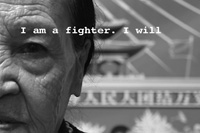

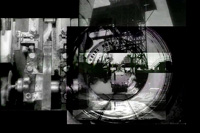
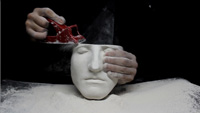

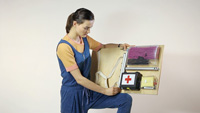
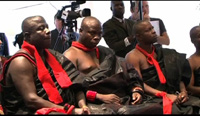
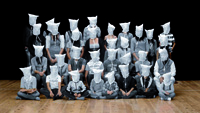
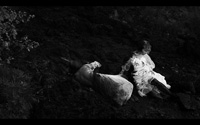
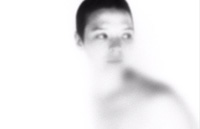

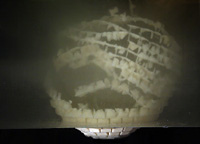
.jpg)

.jpg)

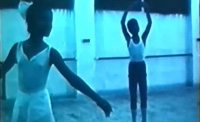
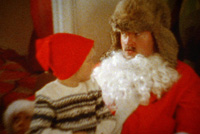

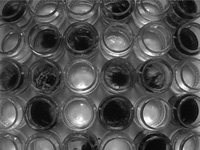

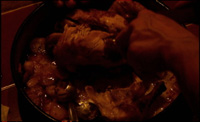
 03 copy.jpg)
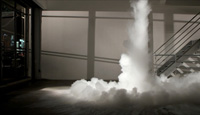
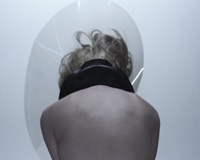
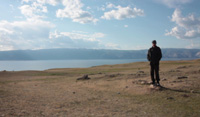
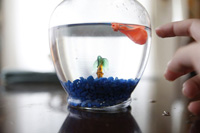


.jpg)
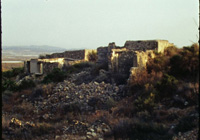
 02 copy.jpg)
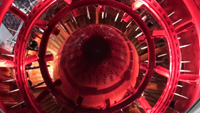
.jpg)
